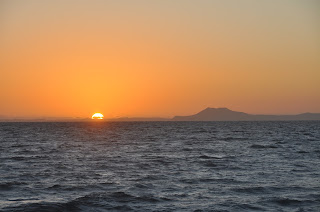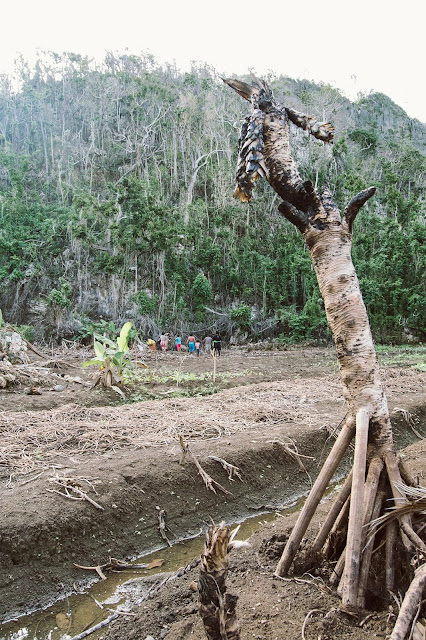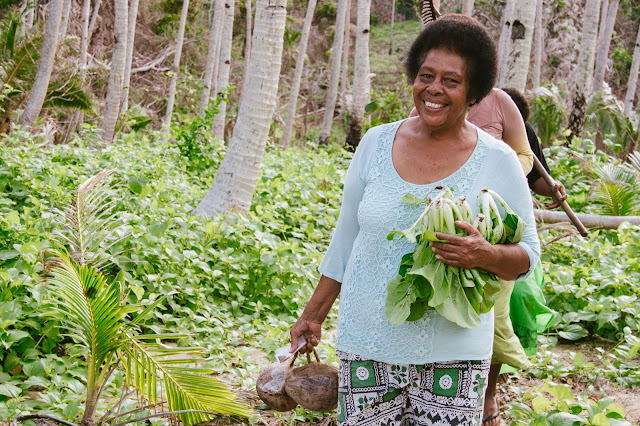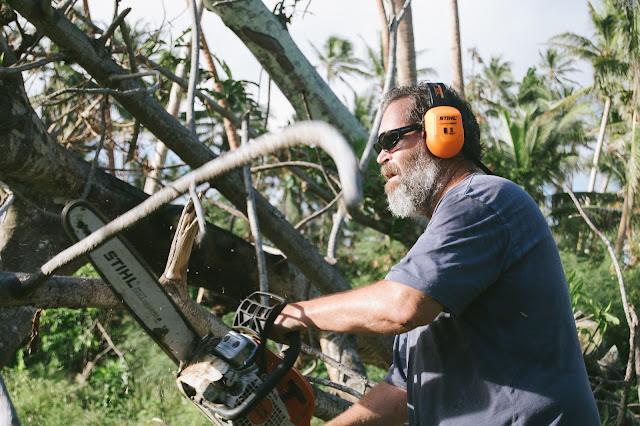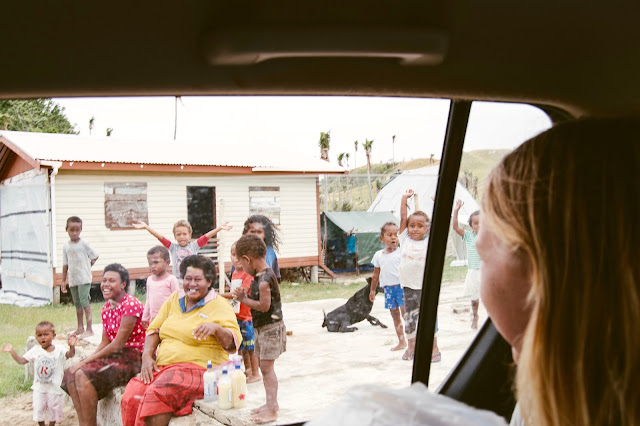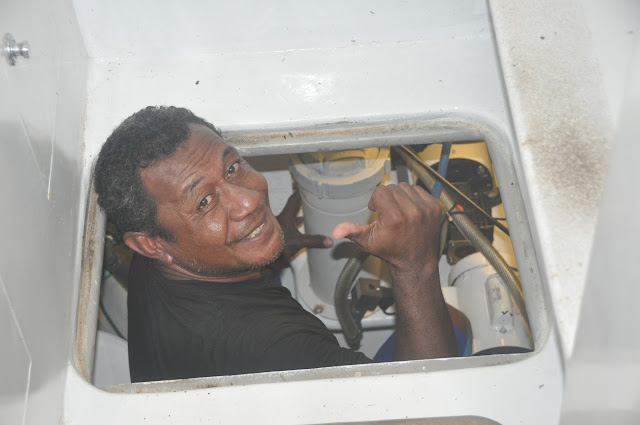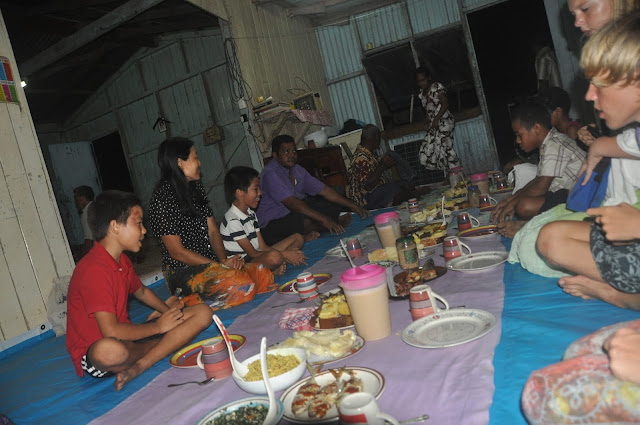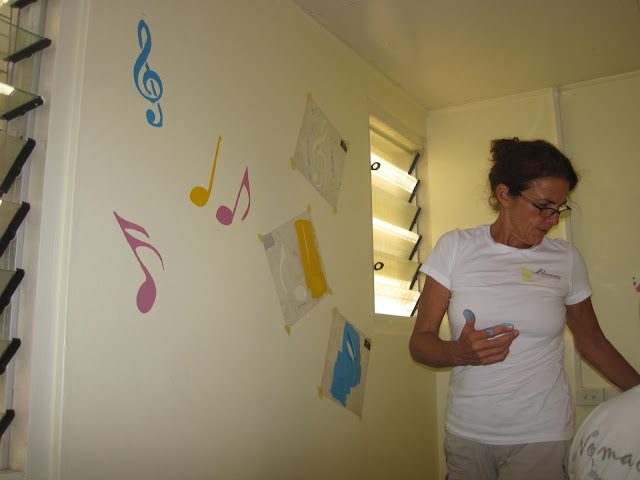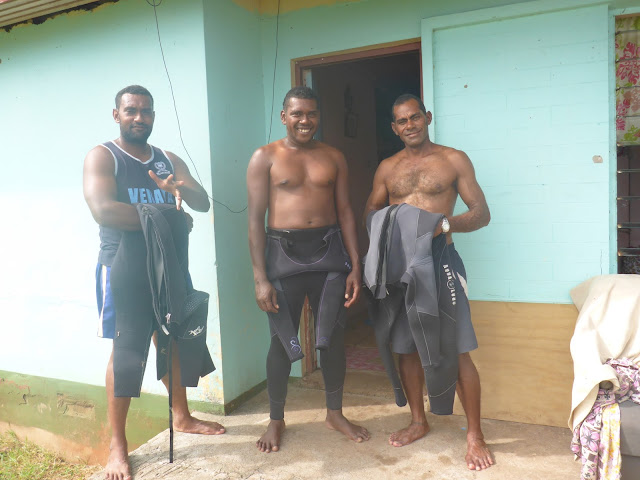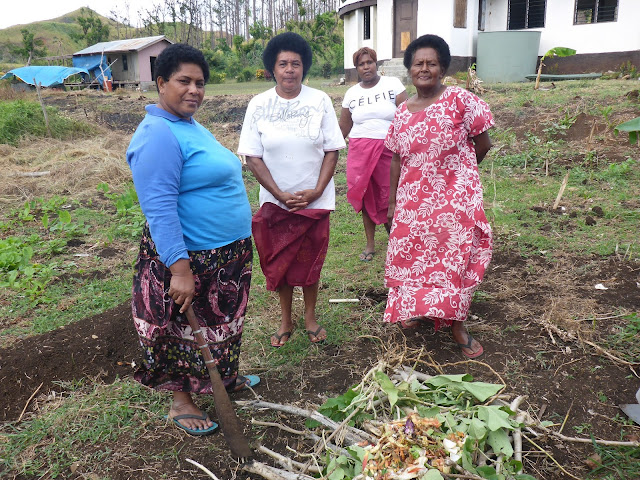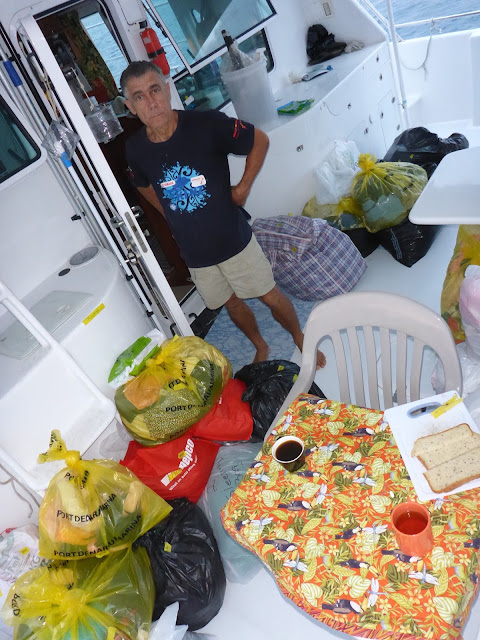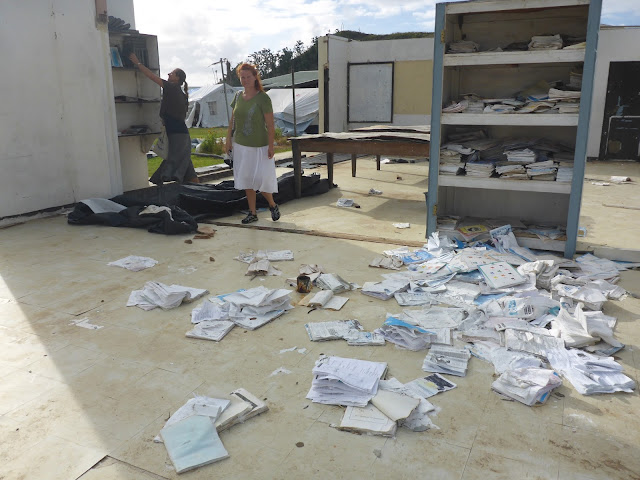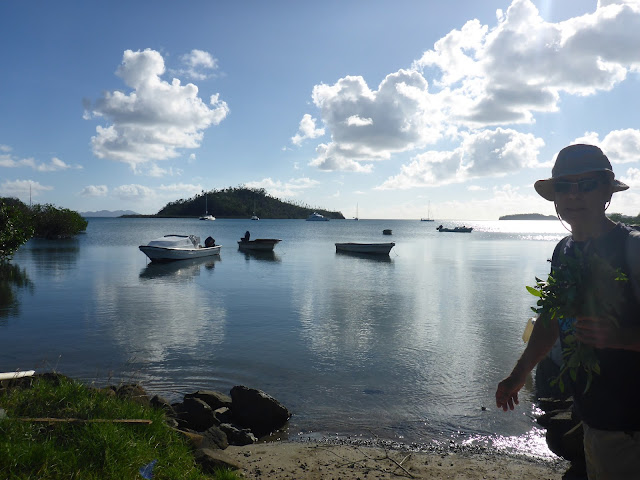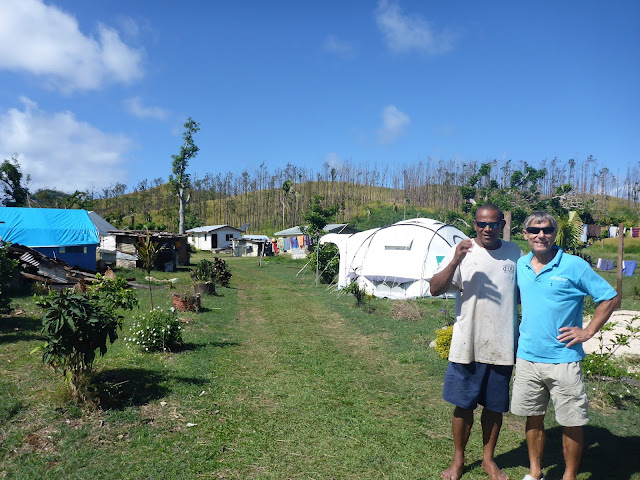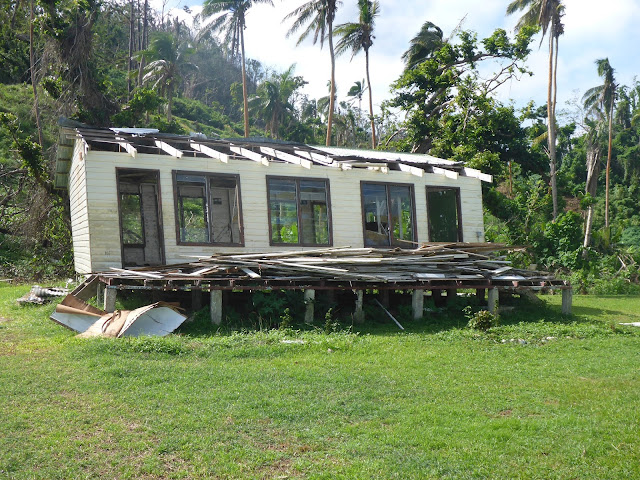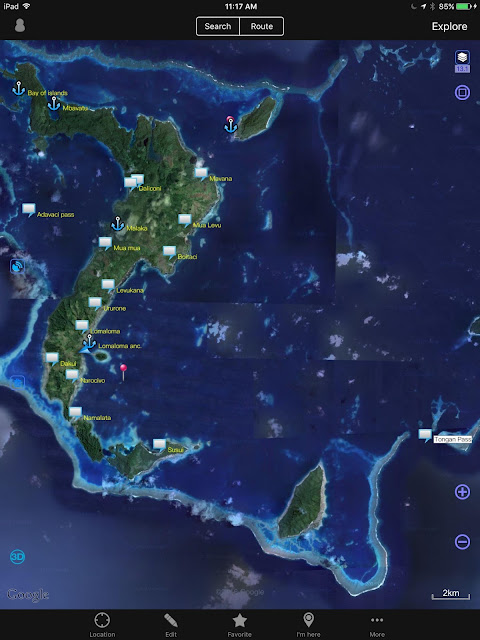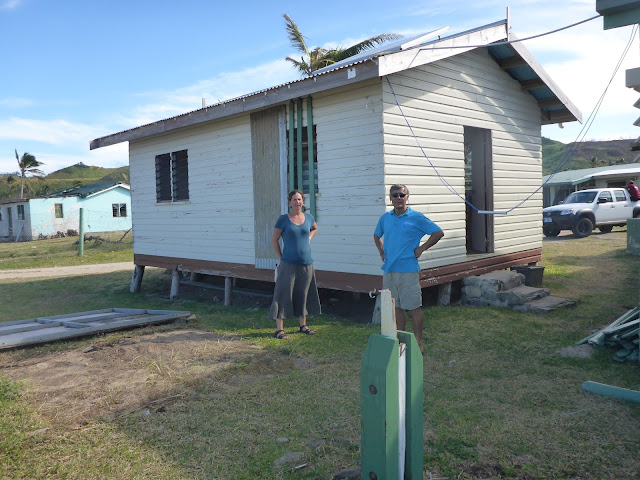SEA MERCY – ONE GARDEN AT A TIME
 |
| In Malaka, preparing a bed to seed the first carrots |
Loma Loma, Vanua Balavu
June 23, 2016
“First Winston destructed all our crops. Us, women, replanted our small gardens but six weeks later cyclone Xena hit us again, not as hard as Winston, but still destructed our new crops. We planted again, but then the caterpillar came. We’d never seen caterpillars before. They ate all our crops. We replanted again, and now the caterpillars eat our plants and the doves eat our seeds. We are desperate!”
 |
| Found in the sweet potatoes |
In Mua Levu, Nani’s plight reflects the mood of Vanua Balavu’s women. They are alone, most of the men have left for Suva to pick up the financial aid from the Fijian government and order building materials for their homes. Meanwhile, the women are left in the villages, fending for themselves and the children. One of their main concerns, aside from shelter and water, is food. Of course, they have received more rice and canned goods than they imagined, but that is not their usual diet. They need fresh vegetables and there are none to be found.
Some have started small gardens by their homes; some villages have started community gardens, spurred by Australian Aid that had distributed seeds to the villages just before Winston. But all seeds have been planted, and there is no more.
 |
| In Boitaci, Sea Mercy volunteer Anita Damiani presents a sample pack of seeds. |
Enter Sea Mercy and the
Rama Krishna Fiji Seeds Program. With 100 packs of seeds to distribute throughout Vanua Balavu, we started a community gardening program, complete with seed distribution, composting instructions, proper bed preparation and seeding instruction, and a natural pesticide program. With the OK from the public health officer and the agricultural officer, we went to work in 8 villages.
Seed packs included 150 seeds of each: long beans, French beans, butter beans, cow peas, as well as radish, Chinese cabbage and carrots. The women had never seen carrot seeds and were delighted!
DELACONI – Voted the best community garden in Vanua Balavu, Delaconi served as our model garden. The soil had been well worked and the women’s gardening club was harvesting cabbage and even selling us some! But it was also time to distribute seeds, so welcome!
The caterpillars had been at work on the cabbage, though, and the potato beetles on the sweet potatoes. It was time for our natural brews of white oil and chili-garlic spray.
 |
Megan (S/V AMELIE IV) presents white oil and chili-garlic spray to the women,
attentive in spite of their grief |
But our timing was awful: when we showed up for our scheduled pesticide presentation, the entire village was in mourning, having lost our friend Biu’s husband the day before. I was ready to turn around, but it was Biu herself, sobbing in my arms, who insisted that we should go on with the presentation. Dressed in black, all the women pulled chairs around the banquet table (for once, there was a table) and while I was choking on words, it was 15-year old Megan (S/V Amelie IV) who pulled herself together and talked about caterpillars and natural pesticide.
 |
In Malaka, Unisi’s daughter harvests cucumbers to sell to the fleet.
Thai Basil grows wild, here, and women have no idea it can be used for cooking;
They only use it for medicinal purposes (sore throat) |
MALAKA – Unisi, the chief’s wife, and her daughter are very good gardeners. They walked us through beds of cucumbers in full production, and were proud of the upcoming long beans, green beans and tomatoes. They too, were out of seeds and our distribution put big smiles on their faces.
Like we had in Delaconi, we started a compost pile, hoping that the organic wastes will, in time, lighten up the heavy soil.
 |
On board DOMINO, JP and Tessa (S/V REWA) prepare a batch of chili-garlic spray,
Recipes sent by our son James via Iridium communication… pretty cool! |
There too, the caterpillars were at work and we gave our presentation: by the 2nd presentation of the morning, our team was smelling pretty ripe of garlic and chili, but nobody minded.
On our last visit, we bought more cucumbers and green beans, happy to have given the women a new source of income.
 |
| Mua Mua: green beans coming up |
MUA MUA – Lo and her sister have a grip on the garden, a green thumb, and had no idea of how to fight caterpillars. In no time, our little group was walking through the rows and picking and squashing the big, fat, green caterpillars.
 |
| Pesticide presentation is a hit! |
Our seed distribution and pesticide presentation under the cooking shed was a big hit —standing room only — mixing the aromas of wood fire and garlic, the smoke of a smoldering fire and the vapors of crushed hot chilis… lovely on a rainy morning!
Our fleet was only delighted to buy fresh watermelon while the women smiled ear-to-ear, pocketing the $ bills for their produce and new seeds for their garden.
 |
| Smell of garlic in the morning! |
The three villages on the west coast were easy-peasy. When we visited the east coast, however, the picture changed to dismal.
 |
| Gardening day in Boitaci: fenced against the pigs… so much to do! |
BOITACI – The garden was a mess! Pigs were roaming through the village and had destroyed the garden. It looked like a bomb had exploded, craters and tree stumps dotting the dry and pocked landscape. There was nothing we could do until the Sea Mercy chain saw team came to chop down trees and build a fence to hold the pigs out.
All we could do was to deal out water jugs for watering, ordering a hose to reach the spigot 70 yards away, and distribute some seeds to get started.
 |
| Boitaci’s kids, always following us imitating us |
There was so much to be done in this garden, we had no idea if it would ever be fruitful… but more on this later.
 |
| Mavana’s overgrown school garden |
MAVANA – What once had been a beautiful school garden was now —3 months after Winston— abandoned and overgrown. But the schoolmaster and Va, the woman with the Green Thumb, were determined to get it started again.
JP traipsed through the weed, picked up a handful of soil and beamed: “Beautiful! This is going to be great for carrots!” Yet, clearing all this brush with nothing but machetes looked over our capabilities.
We distributed packs of seeds, wondering when we could put them in that ground.
Five days later, we returned with a work party (3 young boys from the World ARC Rally) only to find out that the women had cleared the entire garden, 1/3 of it already tilled and planted. They had seeded all their seeds.
 |
| JP & the ARC volunteers are joined by the village’s men to dig new beds. |
Needless to say, JP and the 3 boys went to work, tilling 3 more beds. But a funny thing had happened: two men were now working in the women’s garden, removing stumps, tilling, doing the hard labor. The women’s courage was motivating the men to help out. It was with pleasure that we left more seeds for the new beds.
 |
| Va’s beautiful garden at the back of her house |
Va keeps her own garden behind her house, in more than unconventional containers. She and her sister sat down on the grass with us and once more we gave our pesticide control presentation. But since Va has such a green thumb, we also gave her extra garlic heads and dried chiles to grow new plants… they can make their own pesticide!
 |
| Mua Levu’s struggling sweet potatoes |
MUA LEVU – This is a totally different village, based on a strong clan system. There are 4 clans in the village, which means 4 community gardens. In addition, Betty (the chief’s wife) has her own garden behind her house… so, make that 5 gardens to watch!
This village was caterpillar heaven! All sizes, colors and varieties of caterpillars, worms and beetles were feasting and had destroyed a good part of the crops.
We started with the easy part: walking through the rows of taro and sweet potatoes, removing the bugs and squashing them underfoot. It took a bit of persuading, but the result was immediate: no more bugs!
Each clan leader took a volunteer to their garden, visits followed by a full “debriefing” conducted by Betty under the chief’s awning. Wow! So much structure!
Losanna’s garden was being eaten by doves? It was a job for young Megan who returned 2 days later to build a scarecrow.
Once more, we gave our pesticide presentation and distributed the last of our seeds for this village, pretty confident that they would soon harvest sweet potatoes and green beans.
 |
| Betty’s crop ravaged by caterpillars and beetles |
This was an intense program, giving our pesticide presentation to 6 villages in 1 morning, driven by the police pick-up truck, slip-sliding in the mud, sloshing garlic-chili sauce all over, squashing bugs, but unmistakably supporting those beautiful Fijian women in their fight to survive Winston!
 |
| In the back of the truck, JP going to work! |
More gardening in the next blog; Until then…
dominomarie

